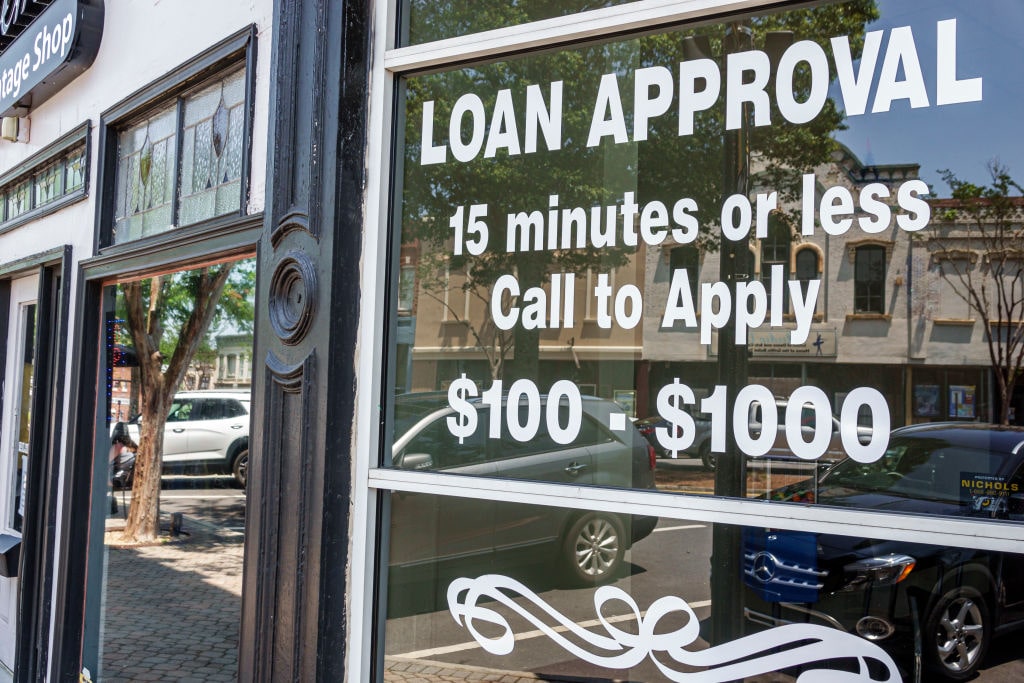Since the regional banking turmoil that rocketed the financial system more than a year ago—and persists to this day—US officials have insisted that the banking system is safe, sound, and liquid. The Federal Reserve is engaged in a new crusade to prevent another Washington Mutual or Silicon Valley Bank: destigmatize borrowing from the Eccles Building. In other words, whether they like it or not, banks will tap the discount window and like it.
A Federal Reserve History Lesson
Following the Banking Panic of 1907, the big banks and Washington conspired to form the Federal Reserve System six years later. When the central bank was established, monetary policymakers created the discount window, a lending instrument designed for struggling financial institutions to use when they are on the brink. Typically, the lender of last resort had discouraged usage unless it was necessary to prevent panic in the streets. The markets also had signaled their displeasure with companies that tapped the window, viewing it as an indication of trouble.
Everything is about to change.
Keep Calm and Borrow On
In recent years, the Federal Reserve has been routinely nudging banks to borrow from the world’s most powerful organization. Over the last several months, the merry monetary authorities have been shifted from a nudge to a shove. They have conceded discussing mandating the financial sector, from the Wall Street titans to the mom-and-pop community banks, to stop peering through the shop window and instead browse inside the Fed’s suite of offerings.
 It started with a holiday season wink from Fed Vice Chair for Supervision Michael S. Barr, who told a festive European Central Bank (ECB) event that banks should consider utilizing “the discount window in good times and bad,” adding that this tool should be a part of a firm’s liquidity arsenal. Was it Barr’s spiked eggnog talking? Perhaps not, as Michael Hsu, acting comptroller of the currency, told Bloomberg TV that forcing banks to borrow would reduce the stigma usually connected with borrowing from the Fed.
It started with a holiday season wink from Fed Vice Chair for Supervision Michael S. Barr, who told a festive European Central Bank (ECB) event that banks should consider utilizing “the discount window in good times and bad,” adding that this tool should be a part of a firm’s liquidity arsenal. Was it Barr’s spiked eggnog talking? Perhaps not, as Michael Hsu, acting comptroller of the currency, told Bloomberg TV that forcing banks to borrow would reduce the stigma usually connected with borrowing from the Fed.
“It’s almost like doing a fire drill. If it’s required when a real liquidity fire comes, then the banks can do it in real life,” he stated. “Operationally, banks would have to go borrow $1, $100 million, whatever it might be, just to ensure that the procedures, the systems, the people, everything is there and in place to access the discount window.”
When the United States commemorated the first anniversary of the SVB and Signature Bank failures this past spring, a flood of central bankers discussed opening the discount window to allow a gentle breeze of dollars and cents to flow in and out.
New York Fed Chief John Williams told a group of bankers that financial institutions must be ready to reach out for the monetary safety net before blood floods the sidewalks of Wall Street. Fed Gov. Michelle Bowman suggested pursuing a broad array of methods “to validate the use of discount window lending in our regulatory framework” and mitigate the “perception of stigma.” Fed Gov. Lisa Cook revealed to the Brookings Institution that “we continue to push the discount window.”
The Eccles Building occupants are not just talking. “It is important for institutions to maintain a level of operational readiness to borrow from the discount window as part of their contingency funding plans,” the Fed Board of Governors said in a recent report. Staff economists at the New York Fed asserted that “requiring banks to borrow at the DW at random times can prevent stigma formation.” Still, these results “do not imply that random borrowing may cure pre-existing stigma,” they added.
So far, the financial sector ostensibly supports the move. The Group of Thirty (G30), an international organization of academics, bankers, and economists, gave the blueprint a seal of approval, calling it the “most important, most feasible, and lowest-cost reform.” However, as the plan comes to fruition, banks might have a few requests, especially if the interest rate is above 5%.
Pushing and Shoving Is Working
Springfield Police Chief Clancy Wiggum famously said in an episode of The Simpsons: “All right, people, listen up. The harder you push, the faster we will all get out of here.”
This is now the Fed mantra, and it appears to be working. Recent Fed data suggest that the number of banks signed up to borrow from the discount window rose 9% year-over-year to 2,971. Cook confirmed that approximately $1 trillion had been pre-positioned. Regardless of the good intentions behind diminishing the shame of asking for a handout from the Fed, it inhibits the market from doing its thing: weeding out the bad ones and spotlighting the good ones.
Forcing everyone to borrow funds unnecessarily masks possible hiccups and potential calamity, creating the very financial crisis the Fed aims to prevent.




